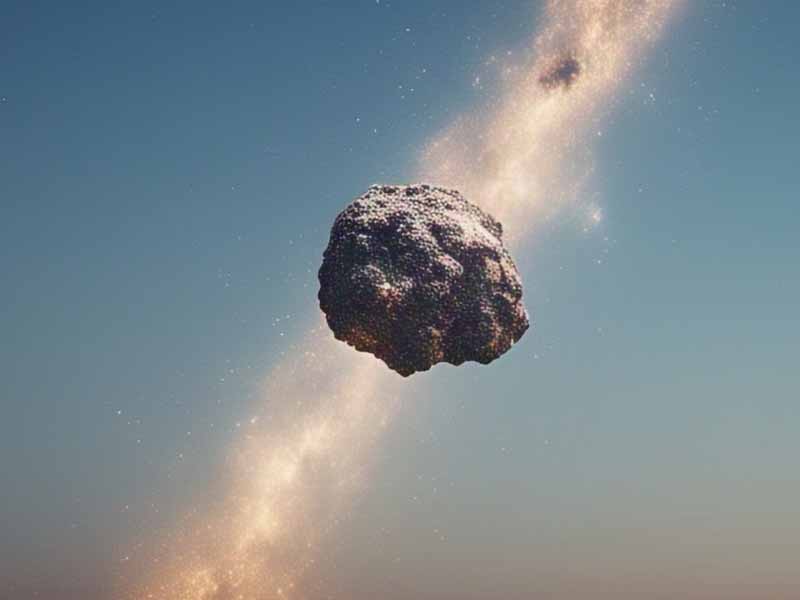
Resilienceapac – Each year, as part of their ongoing efforts to protect our planet, astronomers are chasing asteroids that might pose a threat to Earth. According to NASA, a chunk of rock the size of a car hurls through space on a collision course with our planet. Thankfully, Earth’s atmosphere acts as a natural shield, causing these small asteroids to burn up upon entry, creating a spectacular meteor shower rather than a catastrophic impact. However, not all asteroids are so harmless, and chasing asteroids that could cause significant damage remains a priority for space agencies worldwide.
While small asteroids may light up the night sky with their fiery trails, much larger objects are lurking in space, and their potential to cause destruction is much greater. “Asteroids come in all sizes,” says Michael Küppers, a planetary scientist at the European Space Agency (ESA). The truly massive asteroids those around 10 km (6.21 miles) in diameter are rare but catastrophic. It is believed that one such asteroid caused the extinction of the dinosaurs 66 million years ago. Fortunately, such giant asteroids only collide with Earth once every 100 million years.
A more pressing concern is the size of asteroids like 2024 YR4, which was discovered in December 2024. At 40-90 meters (131-295 feet) wide, it is significantly larger than a 12-story building. In January 2025, the ESA calculated its trajectory, initially predicting a 1.2% chance that it would collide with Earth on December 22, 2032. Although the risk threshold of 1% was crossed, causing alarm, scientists and planetary defense organizations were quick to investigate.
“A Hilarious Blend of Comedy and History in Will’s Musical”
While 2024 YR4 is unlikely to cause a mass extinction, it could still be a “city killer,” depending on its size and where it might land. In February 2025, the chance of impact briefly rose to 3.1%, sparking concerns and debates among experts. Fortunately, the risk later decreased to a reassuring 0.001%. Still, the question remains: how concerned should we be about the growing number of these celestial objects?
Asteroids don’t just appear from nowhere. Most are remnants from the early days of our Solar System, scattered in a vast region between Mars and Jupiter called the asteroid belt. As Alan Fitzsimmons, an astronomer at Queen’s University Belfast and a member of NASA’s sky surveys, explains, asteroids can reveal a wealth of information about the early Solar System. “Any asteroid we detect is generally a fragment of a much larger body that was formed at the birth of our Solar System,” he says. By studying these fragments, scientists can learn about the conditions of the ancient Solar System. Which has evolved over 4.6 billion years.
Though the majority of these asteroids are contained within the belt by Jupiter’s gravity. Some get nudged out of their orbit, eventually crossing paths with Earth. This is where the danger lies: once an asteroid is on a collision course with our planet, detecting it becomes the next challenge.
“An asteroid looks like a point of light against the backdrop of stars. Except it’s moving,” explains Kelly Fast, NASA’s acting planetary defense officer. The task of tracking these objects requires precision, as asteroids vary greatly in size and brightness. Some are small and dark, reflecting little light, while others are bright and easily detectable. While estimates of size such as the 40-90 meters for YR4 can vary. The more data gathered, the more accurate these predictions become.
As the search for asteroids continues, so too does the need for preparedness. While experts no longer view asteroid 2024 YR4 as an immediate threat. Its close encounter serves as a reminder of the dangers lurking in space. In the future, astronomers will continue chasing asteroids not just to predict their trajectories. But to develop the technology needed to protect Earth from potential impacts.
Through international collaboration and continued research. We may one day be able to deflect hazardous asteroids before they can cause harm. Until then, chasing asteroids remains a crucial task for planetary defense organizations. Ensuring that humanity remains one step ahead in the ever-expanding universe.
“Gary Lightbody Devastated by Father’s Passing”
Resilienceapac - Modernizing Australia’s healthcare system has taken a significant step forward with the government’s announcement of a $228.7 million…
Resilienceapac - Asia’s children are facing an alarming future as climate change accelerates. According to a recent UNICEF report, by…
Resilienceapac - Best Island in Asia Pacific Bali has once again proven its status as a world-class destination by securing…
Resilienceapac - Empowering women has long been a crucial step toward achieving true gender equality. The Asia Pacific Forum on…
Resilienceapac - The AI Revolution is transforming industries at an unprecedented pace. With 50% of organizations now adopting Artificial Intelligence…
Resilienceapac - China's Market Shift is reshaping global trade dynamics as the nation actively reduces its dependence on the United…